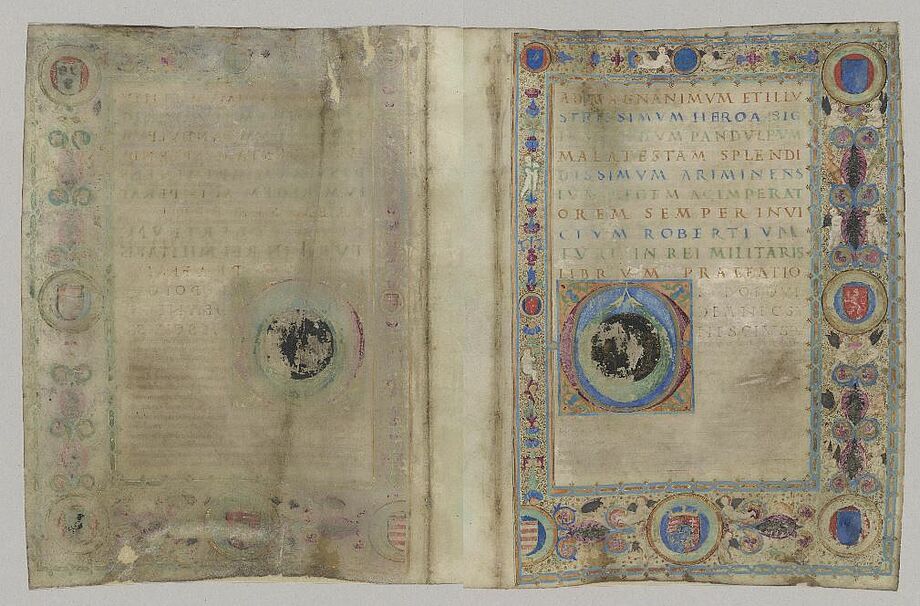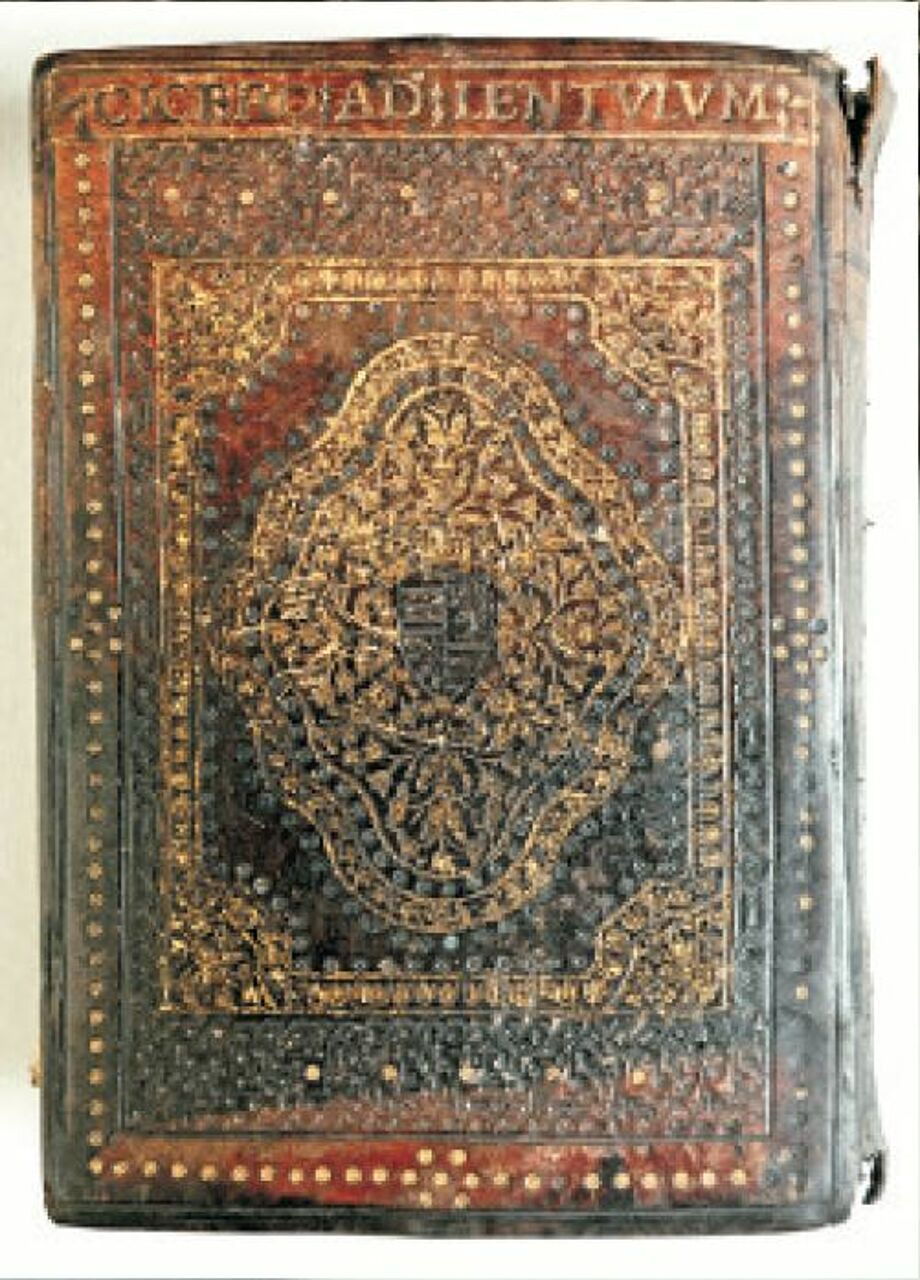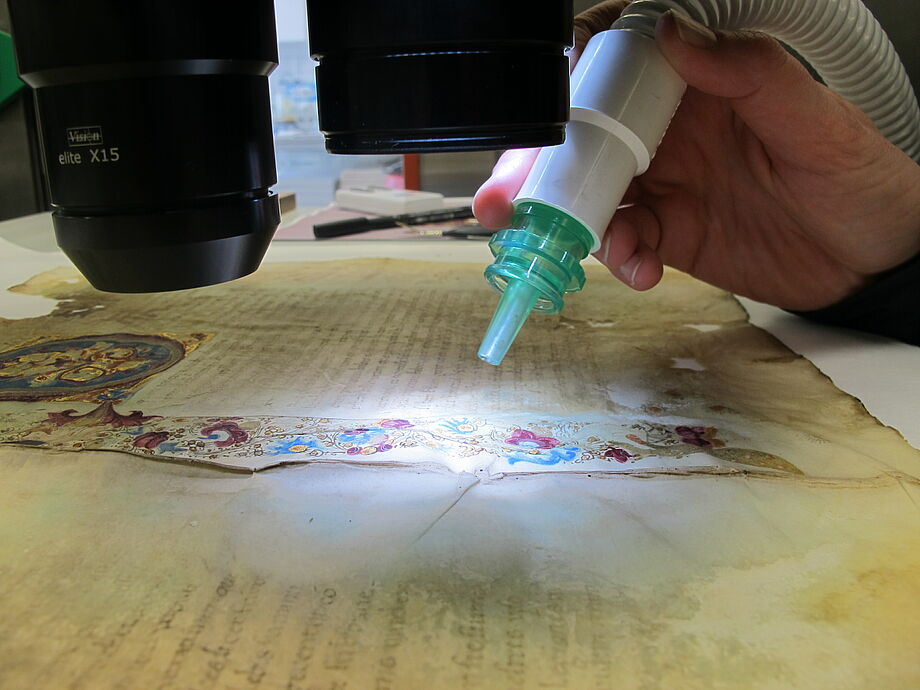Dresden Corvinas
The Hungarian king Matthias Corvinus (r. 1458-1490) owned one of the largest and most important book collections of the Renaissance. In 2005, UNESCO declared the 216 surviving Corvins from 52 public and private collections worldwide as World Documentary Heritage. These include two manuscripts in the Saxon State Library - Dresden State and University Library.
These are the military compendium "De re militari", written by the engineer Robertus Valturius (1405-1475) from Rimini for Sigismondo Malatesta(Mscr.Dresd.R.28.m), and Marcus Tullius Cicero's "Epistulae ad familiares" (Mscr.Dresd.Dc.115). Both manuscripts came to the Electoral Library in Dresden in the 18th century.
The Valturius manuscript was brought to Dresden by the Saxon Elector Friedrich Christian from a trip to Italy in 1740. In the first volume of his "Merckwürdigkeiten der Königlichen Bibliothec zu Dresden" in 1743, the librarian Johann Christian Götze praised the codex as immensely precious and magnificent. The manuscript on 231 parchment leaves measuring 365 x 260 mm was copied in Naples between 1476 and 1484 from the first print of the work published in Verona in 1472. The approximately 100 illustrations of weapons, tools and machines for war on land and sea, which were reproduced in print as simple outline woodcuts, were executed in the manuscript as magnificently framed miniatures in opaque colours and gold.
While the Valturius manuscript was rebound in pigskin in the 17th century, the Cicero manuscript, also made in Italy around 1460/70, still has the original wickerwork binding (260 x 180 mm) of reddish brown morocco over wooden covers with blind printing and hand gilding, made in a Buda workshop. It bears the royal coat of arms of Matthias Corvinus in the centre of the front and back cover and typically the work title "CICERO AD LENTVLVM" on the upper edge of the back cover. Traugott Friedrich Alexander Benedict paid tribute to the philological importance of this manuscript in the preface to his edition of the Cicero letters (Leipzig 1790/1795).
Both codices were severely damaged by water penetration and subsequent microbiological processes during the bombing of Dresden in 1945 in the deep cellar of the Japanese Palace: the parchment hardened and deformed and partly disintegrated, the writing and colours were partly washed out and printed on the opposite pages.
The conservation and restoration of the Valturius manuscript began in the restoration workshop of the SLUB in 1993 to 1997, and the resumption and completion of the restoration took place in 2006 to 2017 according to the latest art technological and material scientific methods. Taking advantage of the strong climatic reflex of the hygroscopic parchment, the deformed 116 double leaves were conditioned in a climatic chamber at 20 °C and 95 % relative humidity in order to be able to process them further. This included detaching and assigning fragments, consolidating the colouring agents, filling in the missing areas with a parchment suspension and controlled smoothing and drying for several months. The double leaves are now stored unbound and are accessible online in the SLUB's Digital Collections.



